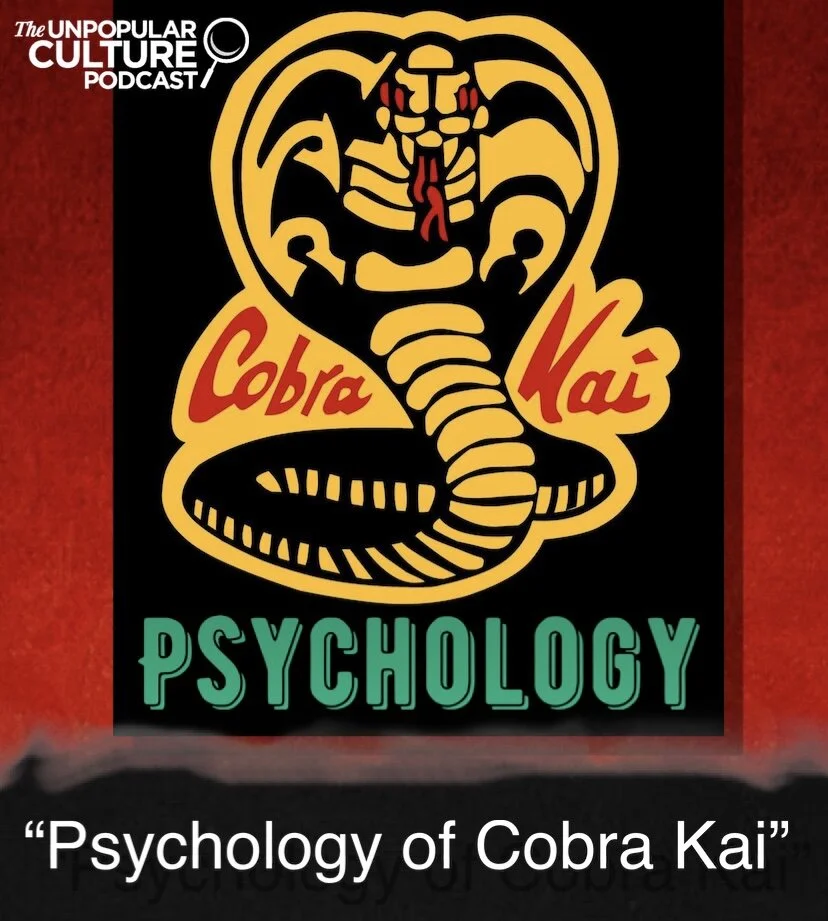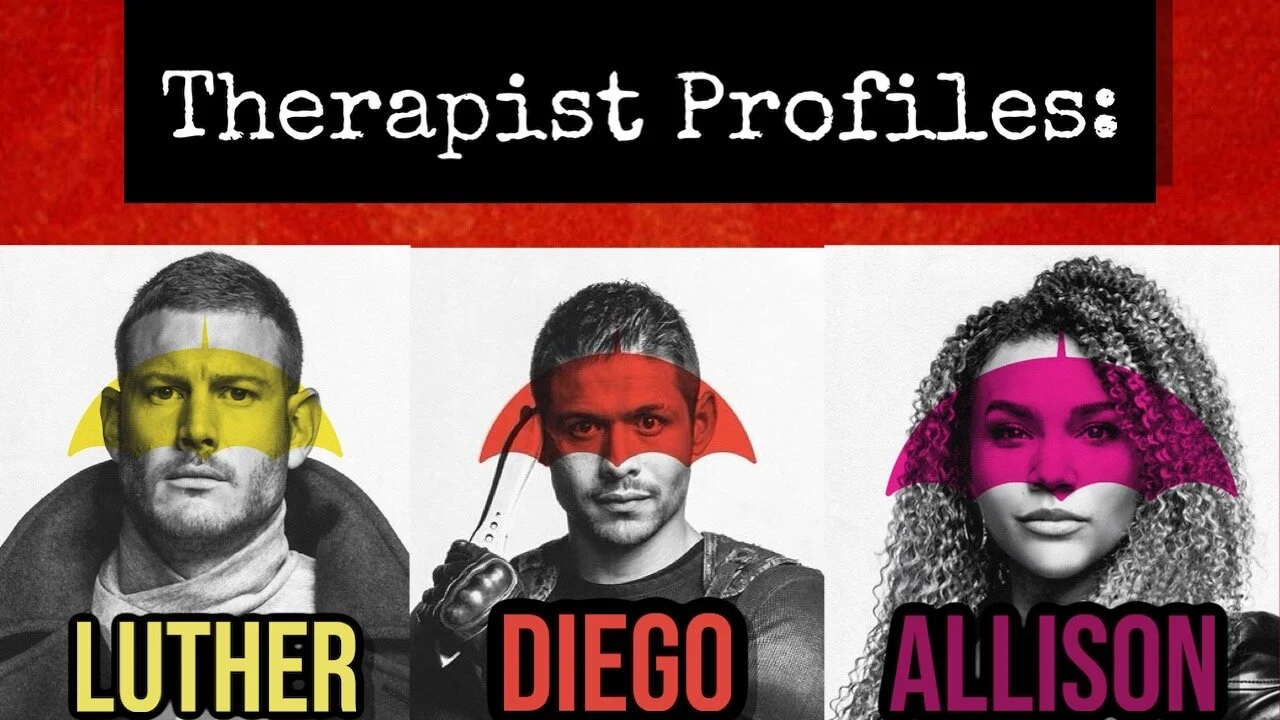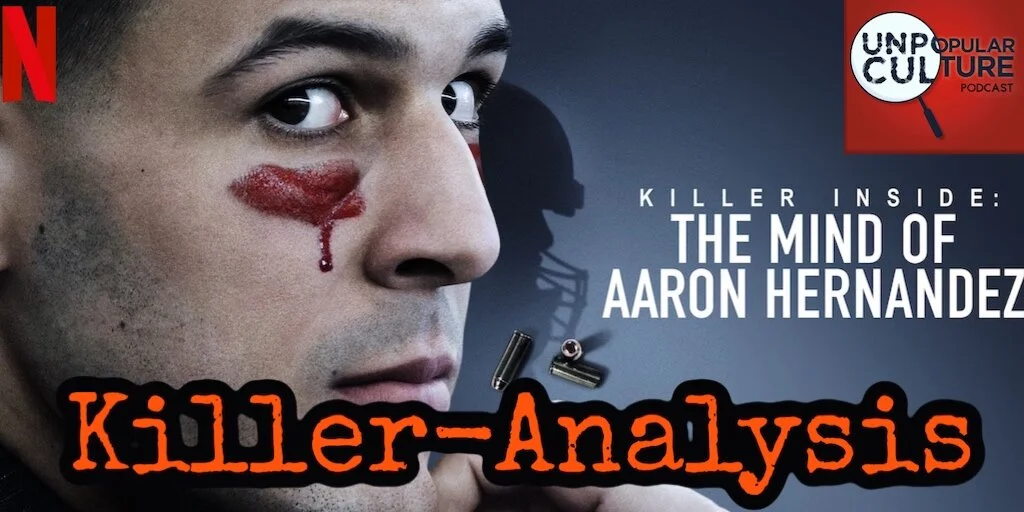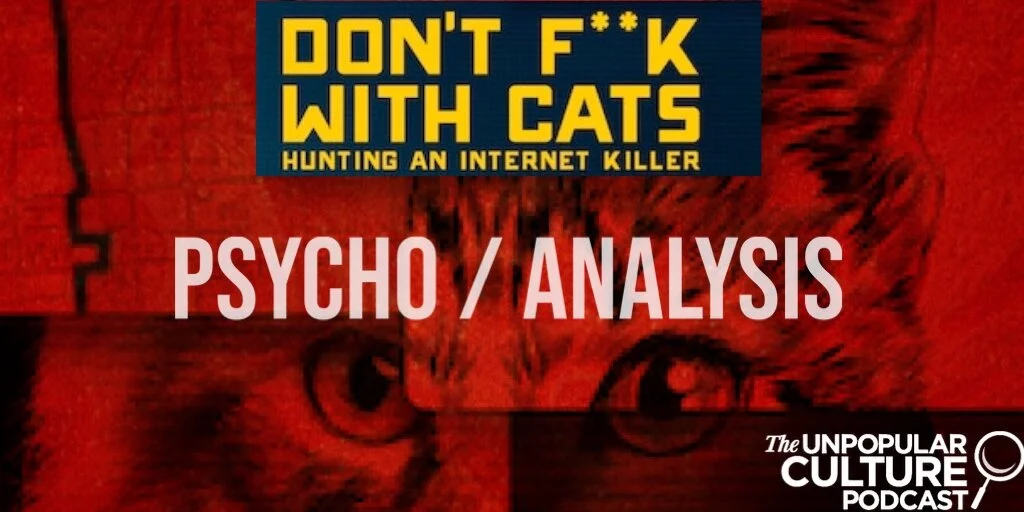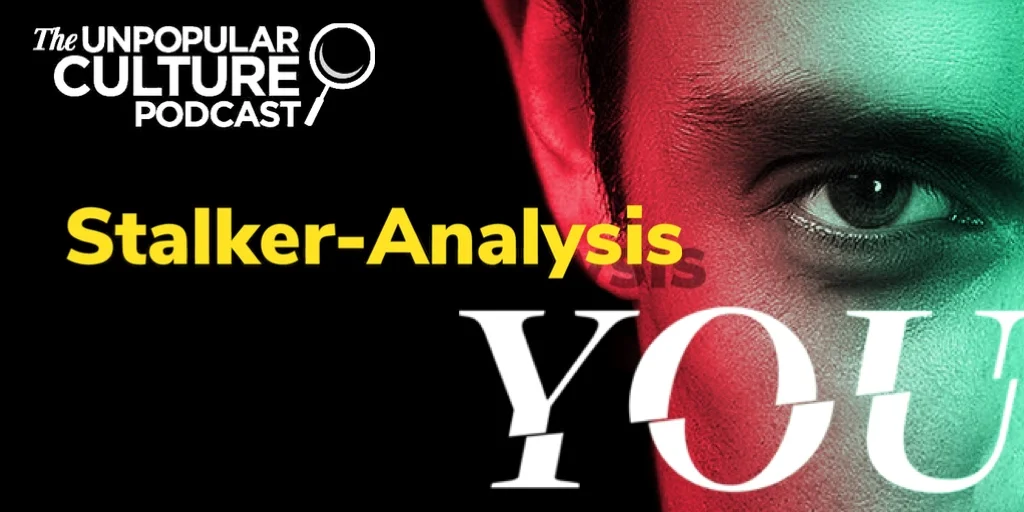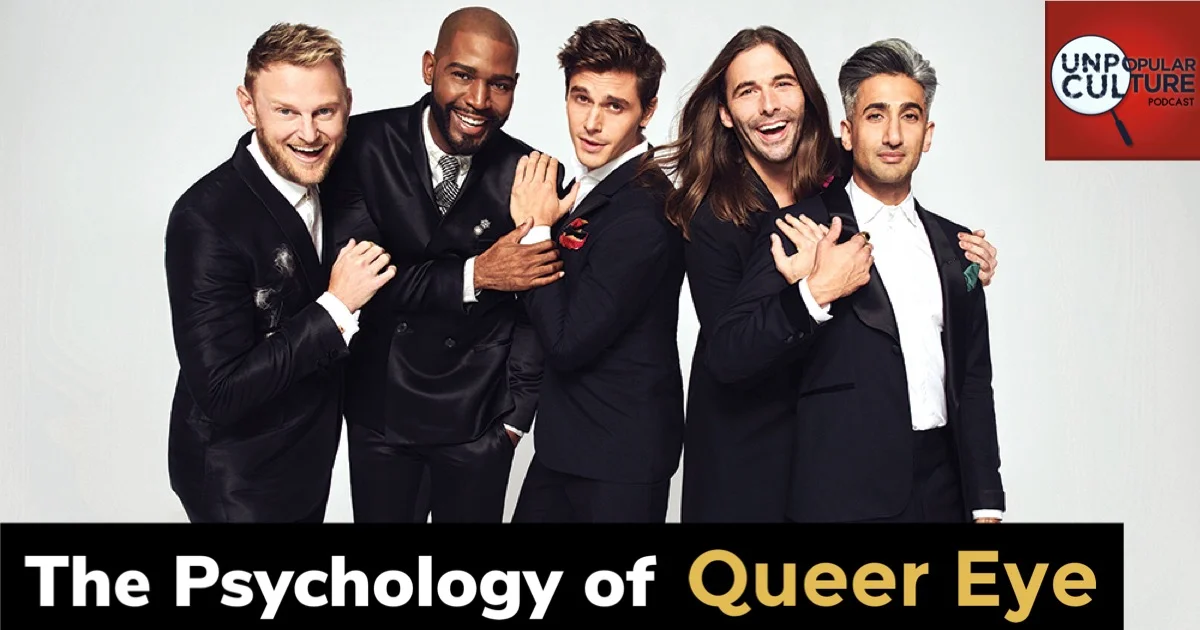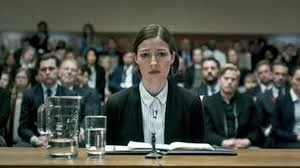In this episode, Michael and Corey sit down to discuss "White Bear"—the episode of Black Mirror that focuses on the Bystander Effect, and also has themes of Criminal Justice and Revenge going to far. We break down and recap the episode itself, as well as dive into the psychology behind this torture-porn and even talk about the implications it has for our own real life society.
Read moreEp: 34 - Netflix's “The Witness"- The Bystander Effect Reloaded
👇Listen To The Full Episode Below👇
This is our follow-up show to our most popular season 1 episode: Beware the Bystander, about the Bystander Effect and the New York Times story about Kitty Genovese. We gained such a huge response for this episode and are excited to get into all of your questions and comments about the show. Since recording that episode, there have been significant developments to this story, like the popular Netflix documentary "The Witness" supposedly 'debunking' the NYT story, so we'll get into all that.
Michael’s Notes
ACCORDING TO AN ARTICLE PUBLISHED BY THE NEW YORK TIMES ON MARCH 13, 1964, THE FOLLOWING EVENTS ARE TRUE:
"For more than half an hour 38 respectable, law‐abiding citizens in Queens watched a killer stalk and stab a woman in three separate attacks in Kew Gardens. Each time he returned, sought her out and stabbed her again. Not one person telephoned the police during the assault; one witness called after the woman was dead."
Assistant Chief Inspector Frederick M. Lussen is still shocked. The Kew Gardens slaying baffles him‐not because it is a murder, but because the “good people” failed to call the police. “If we had been called when he first attacked, the woman might not be dead now.”
This is what the police say happened beginning at 3:20 A.M.: Twenty‐eight‐year‐o1d Catherine Genovese, who was called Kitty, was returning [from work]. She turned off the lights of her car, locked the door and started to walk the 100 feet to the entrance of her apartment.
Kitty noticed a man at the far end of the lot. Then, nervously, she headed up Austin Street toward Lefferts Boulevard, where there is a call box.
She got as far as a street light in front of a bookstore before the man grabbed her. She screamed. Lights went on in the apartment house on Austin Street, which faces the bookstore. Windows slid open and voices punctured the early‐morning stillness.
She screamed: oh, my God, he stabbed me! Please help me! Please help me!”
From one of the upper windows in the apartment house, a man called down: “Let that girl alone!”
The assailant looked up at him, shrugged and walked down Austin Street toward a white sedan parked a short distance away.
Lights went out. The killer returned to Kitty, now trying to make her way around the side of the building by the parking lot to get to her apartment. The assailant stabbed her again.
“I'm dying!” she shrieked. “I'm dying!”
It was 3:50 by the time the police received their first call, from a man who was a neighbor of Miss Genovese. In two minutes they were at the scene. The neighbor, a 70‐year‐old woman and another woman were the only persons on the street. Nobody else came forward. The man explained that he had called the police after much deliberation. He had phoned a friend for advice and then he had crossed the roof of the building to the apartment of the elderly woman to get her to make the call.
“I didn't want to get involved,” he sheepishly told the police.
WINSTON MOSELY
Kitty Genovese's story was made widely famous by the New York Times shocking article about '37 People Who Did Nothing' and now everyone knows her name and her case is used widely as an example of the Bystander Effect. We're calling this episode RELOADED - because we're elaborating on the story. And in order to give you all the sides of the story, lets start with a lesser-known perspective: Kitty's murderer, Winston Mosely.
According to an alternate story more focused on Mosely, these are the general events. "As Kitty Genovese walked toward the apartment complex, Moseley exited his vehicle, and approached Genovese armed with a hunting knife. Frightened, Genovese began to run across the parking lot and toward the front of her building. Moseley ran after her, quickly overtook her, and stabbed her twice in the back. When later confessing, Moseley said that his motive for the attack was simply "to kill a woman".
Other witnesses observed Moseley enter his car and drive away, only to return ten minutes later. In his car, he changed to a wide-brimmed hat to shadow his face. He systematically searched the parking lot, train station, and an apartment complex. Eventually, he found Genovese, who was lying, barely conscious, in a hallway at the back of the building where a locked doorway had prevented her from entering the building. Moseley stabbed Genovese several more times. Knife wounds in her hands suggested that she attempted to defend herself from him. While Genovese lay dying, Moseley raped her. He stole about $49 from her and left her in the hallway."
According to a witness, Moseley was arrested 5 days after Kitty's murder while stealing a television in Queens. This witness said his face looked "calm as can be"
Winston Mosely fits the profile of someone who is called to have anti-social personality disorder; common street names of this are psychopaths, sociopaths.
A lawyer on the case said Moseley's "confession as to Kitty's killing flowed normally as part of his conversational tone, so it was like I stole a tv and by the way I killed this person." You see this a lot in serial killers and psychopathic behavior, the killer is emotionless, as if they have in the DSM what is called a lack of remorse, indicated by being indifferent to or rationalizing having hurt, mistreated or stolen from another.
It's been suggested that serial killers that kill methodically the way Mosely did, like Ted Bundy have an average IQ of 113 (with the overall average IQ being 100). Mosely was highly intelligent, he had an IQ of 135 and earned his bachelor's degree in Sociology while in prison. Psychopaths are typically highly intelligent, think of Dexter, Ted Bundy, Patrick Bateman from American Psycho. Can you think of any more?
In the Netflix documentary, Moseley wouldn't meet with Bill Genovese but sent a letter to him with a different version of the story where he was just the getaway driver for the real murderer, Dominic, some Mobster. And he was just an innocent on looker. For the psychopathic mind, manipulation is second nature, because they have no emotional guilt about lying. Lying becomes just another tool to get what they want, which is all they care about.
THE BIRTH OF THE BYSTANDER EFFECT
This Kitty Genovese Murder started it all, becoming infamous and sparking decades of research on this phenomenon, eventually the term "The Bystander Effect" or "Genovese Syndrome" was created. This is a sociological phenomenon that states that the more people around to witness an emergency situation, the less likely they are, individually to do something to help. This is a result of what is known as Diffusion of Responsibility. The tendency in all of us to NOT take individual responsibility in a given situation. For example, if you live by yourself, you're more likely to take out the trash on a given day because you're the only one that's gonna do it. If you live with roommates, you have the ability to say "Oh, they'll probably take care of it" and this is our inclination.
It's now 50 years later, Bill Genovese, Kitty's brother, spent seemingly his entire life digging into this story. In the Netflix documentary that so many of our listeners brought to our attention about the follow-up to this case, Bill Genovese self-describes his search for more answers about Kitty's murder as a blatant obsession.
Bill Genovese enlisted in the Vietnam war because he didn't want to be a Bystander. Later, he was seriously wounded, eventually spending the rest of his life in a wheelchair. All of this formed a cycle of obsession, and even in the documentary, you can see his family telling him to "let it go" but he cant.
Unable to cope with the idea that so many people watched his sister die, he looked into the original New York Times Article, collecting more information on the case. As a result of Bill's investigation, we now know much more about the murder, the case, and the all of the holes in that original New York Times article.
It would have you believe that literally 37 people watched the full murder and never called the police or reported anything. And this is not entirely true.
REVISITING THE CASE
The original article gives the impression that there is only a single witness, Robert Mozer, who screamed down out of his window "Hey! Get out of there!" to Winston Mosley when in fact, this is far from the truth, as discovered by Bill Genovese.
Only 5 of reported 38 witness called to take the stand during the original trial
Many neighbors reported hearing the screams, Not just blind screaming but the actual words "Help me!" and "I'm being stabbed"
Prosecution attorney even reported that the very first of five witnesses, Night elevator operator, Charles Skoler, saw entire 1st attack. He then went downstairs and went to sleep. If this first witness had called the police when he saw the attack, they would have been there to save her life.
Witness #2: "Karl Ross" reported in trial that he saw 2nd attack, but never called police the night of. Instead, He called his girlfriend who told him "not to get involved."
Witness #3: Irene Frost heard a shreak. Went to the window, stood there for a minute, and went back to bed. The second time heard "Please help me God I've been stabbed"
The fourth witness, "Sophia" finds Kitty in door way and Kitty died in her arms.
Her son says Sophia talked to paper once and asked if she would help again, Sophia said "of course"
Paper then publishes that Sophia said "I don't want to get involved"
Newspaper seemed to reinforce preconceptions that nobody wanted to help.
Witness #5 Patti says she called police and police said "we already got the call", but this was never logged by the police station. Was she lying? There's something called Confirmation bias: which is the tendency to search for, interpret, or recall information in a way that confirms one's beliefs or hypotheses. So it's possible that she is remembering something different because of the way this story blew up with the idea that no one did anything, and she couldn't cope with that being her.
It's worth understand that eyewitness testimonies are far from reliable.
Scientific American reports that once DNA testing was first introduced, researchers have recorded that 73% of the 239 convictions overturned through DNA testing were based on eye-witness testimony.
One thing that plays a role in what a person remembers is their own personal biases. In a study known as Allport & Postman (1947), participants were shown a comic image of a white man on a bus who is about to assault a scared black man with a razor. Participants of the study were asked after a long period of time, to recall details of the image and reported that it was the black man in the image that was holding the razor. Clearly this was not the case, and the results of the study prove that people's recollection of an event can change overtime to fit they're personal knowledge and understanding of society.
THE BYSTANDER EFFECT: OTHER EXAMPLES
The point of laying this out is that this Netflix documentary, "The Witness" did NOT disprove that her murder was a shining example of the Bystander Effect.
No, it wasn't 38 people who watched and did nothing, but there WERE an alarming number of people who saw, knew exactly what was happening and didn't call the police. If Kitty Genovese had never existed, the Bystander Effect would still be a phenomeno
EXTREME EXAMPLES
"The Richmond High School Incident" - On October 27, 2009, A 15 year old female was gang-raped by more than 15 male students at a homecoming dance in front of dozens of other students who stood around and took photos with their phones, for more than 2 and half hours.
In a message posted on an online alcohol abusive help-group at 12:50 P.M. on March 22, Larry Frostaid wrote: ''The conflict with my ex-wife was tearing me apart, and when [my five-year-old daughter] was asleep I got wickedly drunk, set our house on fire, went to bed, listened to her scream twice, climbed out the window and set about putting on a show of shock, surprise and grief to remove culpability from myself,'' and out of the 200 people that saw the message, only 3 reported it.
EVERYDAY RELATABLE EXAMPLES
witnessing a car accident, or a person broken down on the side of the road, if you were one of few left on earth and passed a borken down car, you'd be more likely to help them, but in daily reality, as you see all these other cars pass too, you're obviously much less likely to help.
Daily Chores, like we mentioned taking out the trash or vacuuming, you're more likely to do if you're alone, because you're the only one that will, but less likely if someone else could.
Think of 2 people in a space, yes, but then think of a dorm floor of A nerdy kid is walking through a school hallway in a sea of other students, a bully pushes his books down, and no one stops to help. Kitty deserves the legacy, her murder did good for people to prevent in the future...
Unpopular Culture Podcast is a psychology podcast hosted by Professor & Psychoanalyst Michael Drane. With help from professionals in different fields, he seeks to shine light into the broken underbelly of society.
Listen as he takes on the psychology behind subjects like:
True Crime: serial killers, murders, stalkers, cults, forensic analysis
Psychology: mental illness, social phenomenon, mob mentality, psychoanalysis, etc.
Culture: Sexuality, Satanic Panic, love, Tv analysis, movie analysis.
We are an independent psychology podcast. Help us keep UPC free of ads and on the air. Please consider supporting the show and get access to our "Stalkers Only" archive, and help be a part of the creative process.
Support the Show! —> patreon.com/upcpodcast
Follow Us On These Social Media Platforms
You Can Follow Us Here Or Anywhere You Find Awesome Podcasts
Watch The Episode On YouTube
Ep: 2 - Beware the Bystander - The Psychology of the Bystander Effect
The Bystander Effect is a social phenomenon that causes people to be less likely to take action if there are more people around. This psychological tendency in our society called diffusion of responsibility. The story of Kitty Genovese surrounds her murder and people who ignored her cries for help. The Witness (Netflix) involves Kitty’s real-life brother in modern day.
Read more

